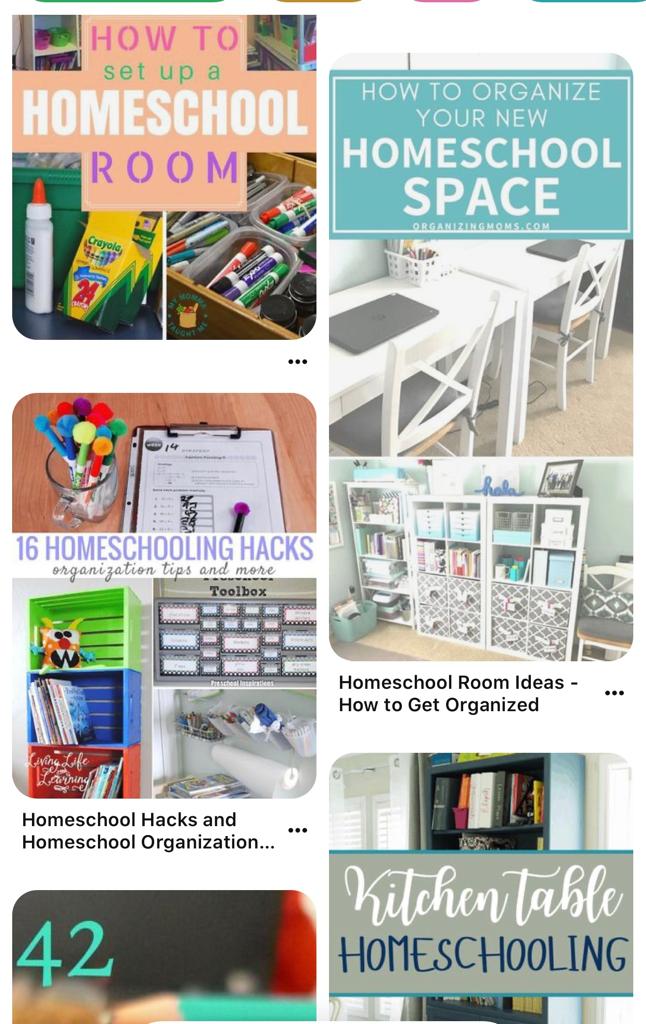
With 2020 being the year of distance learning, the quarantine has built up a level of emotional and educational uncertainty for parents of school-going kids. As schools are scrambling to build effectiveness in remote classes, parents are bound to become homeschooling teachers for their kids this year.
As parents, you can keep the remote learning stress to a minimum by turning this into a fun and productive experience for both you and your kids. And an important step for this is setting up a productive homeschool learning space in your home
From our experiences with homeschooling students at Talentnook, we have some tips and advice on transforming your home into the best environment for homeschooling your child. To make this new initiative a success, you’ll need to be flexible, patient, creative with online resources, and other homeschooling parents.
1. Carve out a special homeschool learning space in your home
While you might be tempted to set up homeschooling sessions on the couch or the dining table, these areas aren’t the most conducive to effective learning. Create a dedicated space to make it easier for your kids to concentrate and stay disciplined.
With tons of homeschooling setup ideas bombarded on Pinterest, you can play around with multiple ideas and keep changing them periodically for novelty and fun.

We can’t thank Pinterest enough for awesome homeschooling ideas.
Your homeschooling learning space can be anything – a traditional classroom style set up with desks and whiteboards, or a personalized learning space of your own. Encourage your kids to personalize their desks with stickers and posters which motivate them.
Try to choose a location that’s not close to distractions like the television, video games, or high-activity areas. Have a big room containing preferably lots of windows for sunlight and fresh air. Stock it with a large enough bookrack for storing all of your child’s reading materials, a desk with a comfortable chair, some fun study paraphernalia (that’s where you get creative with stationery and hand made crafts), a whiteboard to make learning more interactive, and other essential stationery supplies. Even with all of this, ensure its clutter-free.
Make this space comfortable. While having good sunlight coming into the room could be wonderful in the winters, it could turn unbearable in the summers. So invest in a good heating and cooling system to keep your learning space comfortable.
You must ensure that this room is not used for any other activities than homeschooling. It certainly cannot become a playroom or you might notice the kids losing focus here.
Also Read: 8 Things to Know Before You Start Homeschooling Your Child
2. Ask your child how he/she likes to learn
Give your child ownership by allowing them to make the learning space their own. Asking the following questions about how your child likes to learn will help you build a more conducive learning space for them:
- Does your child prefer learning alone or they benefit more from group learning with friends?
- Can your child sit for long periods or are they habitual of moving around?
- Does your child prefer lots of natural light and prefer window-side sitting. or they can focus only in distraction-free secluded spaces?
- Does your child like arts, posters, etc? Are there any personalities or achievers who inspire them? What images do they find exciting, inspirational, or motivating?
- Determine how crowded can their learning space be? Does your child need everything close at hand, or do they prefer a cleaner workspace?
- Does your kid learn better with cooperative learning and group discussions? If so, you can use a circular table to bring other children to participate in learning activities.
- Alternatively, if your child enjoys more thinking/creating activities, bring in whiteboards, drawing paper, and a larger/more personal desk.
- Does your child love to invent things? or gets excited about trying out science experiments? This could mean more industrial work/learning space will be great for their needs.

Collaborate with your child to design their favorite place in the house
Also Read: 5 Strategies for Engaging Students While Teaching
3. Use your whole house and the surrounding space as a homeschooling classroom
Your house and the surrounding space can act as a wonderful learning environment for homeschooling kids. Turn your home into a homeschool learning space setup.

- Learning while being outdoors can be great to make learning fun and interesting. Schedule learning sessions and readings with your kids in your balcony (if weather permits), your garden, while taking a stroll along the beach (if you have one nearby) or a nearby park. This way they can relax, get some fresh air, and enjoy their books in a new environment.
- Your walls can aid you in teaching: hang up educational charts, fun math facts, English grammar practice stickers, US and world maps for geography discussions, Math tables for quick practice, word lists for building vocabulary or your everyday learning schedule.
- Build a virtual science lab in a separate room within your house or in your backyard. Encourage fun STEM experiments (with keeping safety in mind of course). Give your kids living things to tend to such as plants and/or fish for hands-on biology.
- Look for ways to turn lessons into exciting, engaging, hands-on experiences. Is your child’s science unit learning about trees? Grab a magnifying glass and take your kid outside for a close-up study of bark, branches, and leaves. Start a garden. How does that seed grow into a plant with red, juicy tomatoes?

Bring Geography to life by putting up the world map on your child’s wall.
Also Read: Ideas to Make Homeschooling Math Fun and Effective for Your Child
4. Make technology your friend in homeschool learning
The right use of technology in your classroom can elevate yours and your kid’s homeschooling experience in tremendous ways. Here are some ways you can use interactive technology to harness creativity and :
1. Invest in a projector: To make things fun in your homeschool learning space, set up space for a projector opposite a blank wall in your kid’s learning space, and make your daily lessons engaging and memorable by playing a small video on the projector explaining the lesson topic with visuals and examples.
2. Educational virtual tours: Many museums and performing arts centers are giving out virtual tours online. From Ellis Island to Mars, your kids can go anywhere without leaving the couch. Find below a list of virtual tours you can enjoy with your kid:
Museums
- American Museum of Natural History
- British Museum
- Metropolitan Museum of Art
- Musée du Louvre
- Museum of Science
- National Gallery of Art
- Smithsonian National Museum of Natural History
Zoos and Aquariums
- Atlanta Zoo
- Bronx Zoo
- Cincinnati Zoo
- Georgia Aquarium
- Houston Zoo
- Reid Park Zoo
- Shedd Aquarium
- San Diego Zoo
- Monterey Bay Aquarium
- National Aquarium
Science tours
→ Outer Space Tours: Kids can see the real surface of Mars, courtesy of the Curiosity rover. NASA also does virtual tours of the Moon, along with the International Space Station.
Landmarks Virtual tours

Smart projectors can turn your whiteboard into an interactive surface
5. Utilize Youtube
Make the most of the rich resources available on Youtube. YouTube has a rich collection of tutorials on new skills and crafts that may excite both you and your child. Indulge in learning a craft together or a lifelong skill like a musical instrument, creative writing, drawing, digital art, game coding, photography, cooking, and much more.
Also Read: 5 Ways to Effectively Use Technology for Teaching
6. Connect with other homeschooling parents
When homeschooling, technology can bring you closer to other such parents virtually. Join online groups or build one with your friends/ local families and try out online “study meetings” through Zoom.
Contact the parents of your child’s friends to discuss anything from assignments to advice, or just to lend emotional support to each other’s struggles in at-home teaching.
Network with local online parenting or teaching groups for ideas on educational resources.
Diving In
With these organization tips and homeschool learning space ideas, set up a brand new exciting space for your child that will help them feel comfortable and enthusiastic about learning every day.
Understand that every child’s learning journey is unique. Some kids might excel at-home learning while others may not. As a parent, you need to realize what works for your kid and adjust your methods. Doing so will help you tailor the learning environment and experience for your child or children.
Remember, this whole at-home learning situation is new to you too and you’re learning, too. Try out new things to make lessons fun and remember that mistakes and frustrations are part of the journey. We’re all in this journey together, so stay in touch with teachers, friends, and homeschooling groups for more advice.
Let this be a joyous time of exploration for your child.
And don’t forget to ask for help. After all,
Help will always be given to those who ask for it
Ok! We stole that from Dumbledore. 😉
Visit Talentnook’s Homeschooling Help and discover online & neighborhood tutors, programs, test preps, new skills & lessons – for your child’s all-round development in homeschooling.